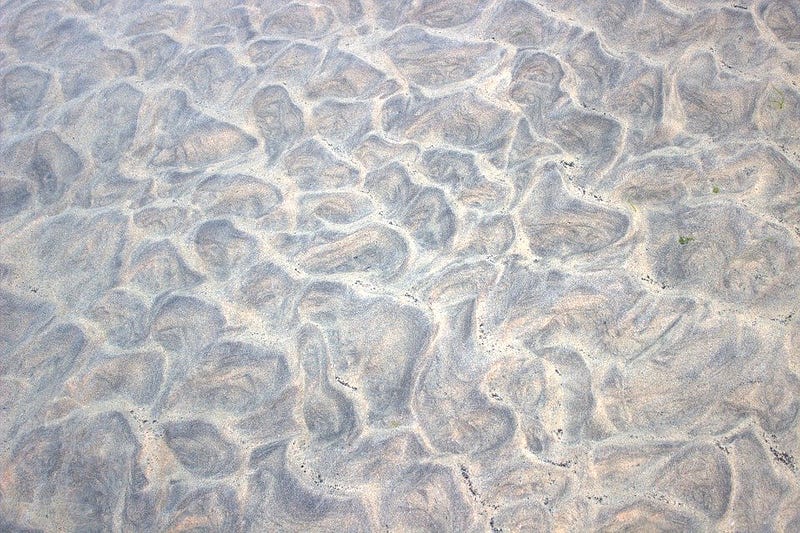Underwater “Roads”
By Amanda Bell, Biology/Data Science, 2023

Off the coast of the Bahamas lie round, irregularly-shaped stone features, the most famous of which are oriented in a line that has become known as Bimini Road. Since its discovery in the mid-1960s, people have debated whether Bimini Road is man-made or naturally formed over years of sedimentation and erosion. So is Bimini Road the remnants of the legendary city of Atlantis, or is it simply one of the many wonders of geology? Perhaps it would be beneficial to first explore what Bimini Road is and how scientists believe it formed.
Bimini Road is made up of beachrock, a sedimentary rock containing various sized sediments and limestone. Beachrock can contain human artifacts; however, only shells and rock fragments have been found in Bimini Road. Beachrock formation is confined to warm tropical areas like the Bahamas and the intertidal zone where the rock can form from the rise and fall of the tides. Essentially, the constant flood of supersaturated seawater through the sand, along with evaporating seawater and the release of carbon dioxide from the water, helps sediments fuse together just beneath the sand. The formed beachrock remains hidden until the overlying sand is eroded. Once uncovered, beachrock cracks and separates into different-sized slabs as a result of exposure to the sun and water similar to the way concrete roads form. The beachrock is once again submerged when the sea level rises, creating an underwater road.
Despite the science behind the formation of underwater structures like Bimini Road, there are a growing number of alternative theories regarding their formation. The most popular theory is the idea that Bimini Road was part of the lost city of Atlantis. Ancient harbors in the Mediterranean Sea closely resemble Bimini Road, leading people to connect it to Atlantis; however, the stones are too young to be related to Atlantis. Others say that the stones were arranged by Chinese merchantmen for hauling and repairing their ships following a storm in the 1400s. However, lack of evidence weakens the validity of this theory.
A more plausible theory is that the stones were already there, and people used them to suit their needs. As with the Atlantis theory, believers of this theory use the harbors in the Mediterranean sea as a model for their views at Bimini. Ancient people of the Mediterranean region were part of technical, culturally-rich societies, so structures they built would consist of artifacts such as tools used to build the structures. If the harbors of the Mediterranean were man-made, it would be reasonable to assume that the harbors have artifacts embedded in them. Since there are no artifacts in the Mediterranean harbors or in Bimini Road, they are likely not man-made.
In the past decade, Bimini Road has actually created tension between scientists, most notably Dr. Greg Little and Dr. Eugene Shinn. Little claims that Shinn planted fake artifacts around Bimini Road nearly thirty years ago to spark interest in the area. Even stranger is that Shinn had the support of the United States Geological Service (USGS) and in his actual research, attempted to disprove the theory that Bimini Road is man-made. In 2015, Shinn admitted to planting the fake artifacts, but has faced no consequences since his confession. Is the USGS implying that archaeological forgery is ethical, or that Shinn’s fraudulence wasn’t significant enough to result in consequences? Does this discredit not only Shinn’s research on Bimini Road, but also his research on other topics? This doesn’t change the uncertainty regarding the origins of Bimini Road, but it certainly calls into question the authenticity of Bimini Road research.
In short, the mysterious underwater structures around the Bahamas have inspired many theories regarding their origin. Research in the field is questionable since Shinn’s admission of planting false artifacts, so it’s unlikely that Bimini Road’s origin will ever be known. Science disproves many of the anthropogenic-based theories, but that shouldn’t diminish the beauty of the rock’s structure or the artistry of the theories.
